Here Comes Small Shading…tutorial? Set Of Advises?? Name It Whatever You Want. Hope Someone Of Y’all

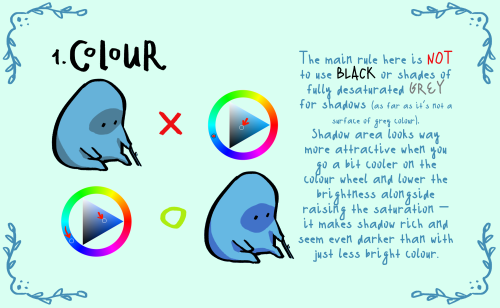

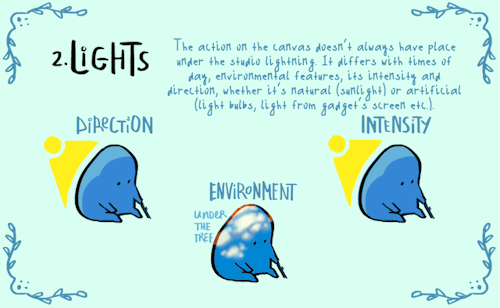

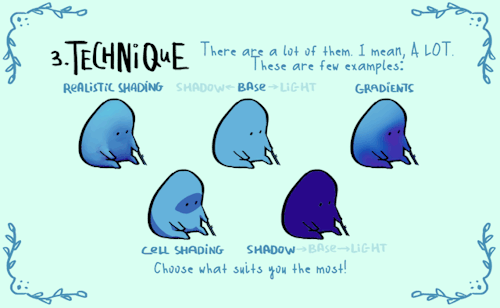

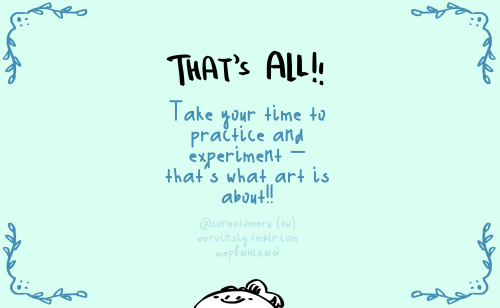
here comes small shading…tutorial? set of advises?? name it whatever you want. hope someone of y’all will find it at least a bit helpful!
special thanks to @cozy-capybara for literally inspiring me to make this thing
More Posts from Nastysynth and Others






new video is up
death omens in Polish folklore
the following things, considered to be a sign of upcoming death - or even something that would bring death upon someone - are widely present in many branches of slavic beliefs. they are deeply rooted in the belief in magic - and even if now thought by many to be merely folk superstition, they were once a very set and important way of recognizing signs, foretelling the future, and protecting yourself and your household - way of life if you will.
considering my research and sources I’m using focus mainly on Polish folklore (with lesser additions from other slavic countries) I refrained from using the universal “slavic” title and categorization.
however, keep in mind that many of those will be present in the folklore of other slavic (especially east and west) lands.
birds:
- if a rooster crows three times, it means the death is coming - similarly, if he crows at night. if a hen crows similarly to the rooster, it should be killed because it is a terrible omen
- killing a stork will bring death upon the killer and misery upon the entire village
- if a swallow hits the window and dies, it foretells a death of someone in the household
- if you hear a cuckoo while staring at the ground or looking down it means death will get you before the year ends
- if a woodpecker pecks at the door or threshold of a house it warns you about the upcoming death
- if a woman sees a black pigeon it is a sign she will soon be a widow
- if an owl hoots throughout the night near the household it is a sign that someone will soon die
- if a jay sits upon the roof, someone in the household will die
- if a nightingale sings while someone is sick or dying, it means their death will be peaceful and painless
- crows, raven, and jackdaws circling above the household were the most agreed upon death omen
dogs:
- if a dog howls relentlessly at night, it means someone will die
- if a dog howls precisely three times, it means that someone just died and their soul passed close-by
- if a dog howls while looking down on the ground, it means he sees death itself coming for someone
- if a dog keeps digging in the ground in one place it is a sign of a grave having to be dug soon
- if a dog dies while its master is sick it is a sign the person will die as well
plants:
- cutting down an elderberry would bring death upon the person who did it; cutting one growing above a pond or stream would poison the water
- a lonely tree in a field, especially if dead or slanted, would bring bad luck, demons, or even death upon someone who touched it or sat beneath it
- digging up a rowan or a hazel tree (or destroying its roots) would bring death upon the one who did it
snakes:
- killing a household or barn snake would bring bad luck, illnesses or death upon the family
- if a child was sick and a household snake died it was a sign the child would die as well
dead, corpses, funerals:
- if someone points a finger at a funeral procession, they bring death upon themselves
- falling asleep in the room where a body of the deceased was kept would bring sickness and death on the person – similarly if someone sat or put anything between the legs of the dead
- if you look a dead person in the eyes they might take you with them
- if you do not belong to the closest family of the dead person or you are not the one appointed to carry out funerary preparations, touching the corpse might bring death upon you
- if someone looks through the window of the room and sees the deceased, that person will die soon
- if the funeral procession stops randomly while going through the village, someone will die in the house by which they stopped
- do not look behind you while in the procession, as the dead person’s soul might be following and will take you with it
spring and Kupala’s Night:
- if someone fences off his household in spring – or during Kupala’s Night St. John’s Eve – and drives the stakes through the ground, they will die before autumn
- if someone bathes in a pond or river before Kupala’s Night or St. John’s Eve they might die, killed by “the evil in the water” (usually topielce, boginki, witches, evil spirits etc)
these are, in all honesty, just a part of nearly countless beliefs and superstitions connected to death - and the signs and omens.
if anyone - especially my Slavic followers - knows more and has something to add, please do so, I’d greatly appreciate it.
(main sources, other than personal research and conversations with people - especially older - in villages and cities of Silesia and Lesser Poland: A. Lebeda, Komentarze do Polskiego Atlasu Etnograficznego: Wiedza i Wierzenia Ludowe, 2002; Z. Sawicka Śmierć i pogrzeb w tradycji ludowej; B. Żurawski Ludowe zwiastuny śmierci i złe wróżby; excerpts from S. Hodorowicz, Polish Customs, Traditions and Folklore)
Slavic beliefs about treshold and hearth
The negative role of the treshold
“Together with the door, the threshold co-created a part of the border between the two fragments of space. It was placed in a point where the continuity of the boundary was breached. The importance of the threshold resulted from its dual nature: the separation of spaces and the chance to move between the two created areas. In symbolic thinking, the threshold could be identified (and metonymically replaced) with the critical points that occur when switching between two states of affairs (e.g. nature/culture, night/day) or personal statuses (e.g. childhood/adolescence, single/ married). Being a fraction of the boundary and the exponent of its crossing, the threshold had the characteristics of a border area, and therefore it was ontologically insecure. And so, because every crossing of the border was related to the risk of contacting the undifferentiated chaos of the underworld, or with touching the sacred, the threshold required special protection and the ritualistic behaviours.
The significance of the threshold in family rituals is quite clearly written in eth- nographic material. The threshold was one of the important elements of weddings or deaths, pregnant women were isolated from it. This boundary of the house did also need magical treatments. Apotropaic actions were also related to the thresholds of cowsheds and stables. The main motive of these activities was burying animals, coins, and/or unbaptized children underneath the threshold, or laying axes, garlic, brooms, knives, and/or herbs braided in a wreath on its surface.
Very few historical documents also describe the role of the threshold among Early Middle Ages Slavs. According to archaeological sources, its protective role (and, at the same time, protection over the whole house) can be confirmed by an auroch’s skull found in Gdańsk (circa 1230-1255), which was found near the south- eastern wall of a house, placed in parallel with it, in an alley between two hous- es; it could have been nailed to the top of the house as a hunting trophy. Wreaths made of twigs and hair could also fulfil an apotropaic function. A large number of wreaths made of phloem (9 pieces) was found during excavations in Gdańsk and Wolin. They were found on the streets, the square, and the vicinity of house walls in Early Middle Ages Gdańsk. Willow wreaths from Wolin were found near a wat- tle-and-daub house wall. In a nearby house some collections of wreaths placed on a corner peg were also found1. The wattle-and-daub buildings were built in the 11th and 12th centuries. They were 5 to 10 cm in diameter and were made of willow. A wicker wreath was in turn found in Szczecin inside a log cabin dating back to the first half of the 12th century. Identical wicker wreaths were present in Slavic buildings in Lund.
A possibly apotropaic meaning is connected with wreaths found in Gdańsk, Szczecin, and Wolin that were made of different materials, including horsehair. The incompleteness of archaeological material relating to the Early Middle Ages period does not allow to determine the exact role of this part of the house in apotropaic treatments. Deliberately omitted in this work is the ban on sweeping garbage over the threshold (the broom was treated as a cleanser), which is evident in ethnographic sources. According to Slavic beliefs the broom, when set on the threshold of a house or barn, defended the entrance against witches and protected from evil eyes.”
The symbolic role of the hearth
“The important part of the house was a place used for preparing meals and getting warm. According to ethnographic sources, the stove is a common component of beliefs and rituals. It was clearly a developed form of the hearth in the form of a fireplace and as such will continue to be considered, because fire was an inseparable companion of existence. Stanislaw Ciszewski assigned the following functions to the hearth:
1. it was a social environment and as such it merged individuals into a solidary group of people; 2. it was a symbol of life and existence; 3. it was a form of altar, and as such was an intermediary between a group of people and the spirits of their ancestors and the extrasensory world
The hearth discussed in this chapter has been treated in two ways: as a symbol of family life and spiritual life. The hearth constituted an integral part of life for a man and his family. It connected them to the extent that any important event was associated with it. In turn, the hearth manifested itself in spiritual life as the eternal worship of fire, seen as a god who must be adored. I am aware that this is an artificial division, but the clear application of it will help “organize” apotropaic magic activities connected with the cult of the hearth.
The fireplace or stove were a symbolic centre of family life, around which re- sided the guardian spirits of ancestors. Rituals associated with the hearth, which are the expression of a particular respect, have been observed in ethnographic material. The most archaic of them is the habit of “feeding” the fire, guardian spirits, clan, and family. These treatments are also confirmed by written sources, which speak about demons of destiny and a house spirit called uboże, which had to be taken care of by leaving food in right places. Also the available archaeological material of the Early Middle Ages allows to confirm the submission of different types of bloody and bloodless offerings near the stove and fireplaces.
Both atmospheric fire and the earthly one had sacred value, because the effect of contacting with them was the dissolution of all shapes, or, as a result, the liquidation of the opposition that characterized human oecumene: beginning-end, light-dark, right-left, and so on. This fire also had to be tamed by applying appropriate apotropaic treatments, which in this case took the form of prohibitions or commands with regard to handling fire. On the other hand fire, ashes, charcoal, or smoke were quite commonly believed to have purifying and protective powers. In the light of archaeological sources the worship of a deified fire within the house is probably the most difficult to detect. Over the centuries magical rites related to the worship of fire have changed. Perhaps the two vessels (from Wyszogród near War- saw and Radzim, Greater Poland Voivodeship) with special lightning-shaped and figural engravings on them were used during the protective magic rituals.”
Slavic protective magic in the Early Middle Ages on Polish territories by Joanna Wawrzeniuk











as requested- my zine about fat and plus size body types from instagram!💖 happy drawing everyone!

My best friend and I were talking sigma anatomy (since idk how to draw him) so I doodled over this for future reference, red is her and blue is me
Jeez man, I really love the way you color. It's simple, yet everything is needed to know is there. How you do it
THANK YOU SO MUCH <3
Can't explain it all in words, so i made a tutorial. Hope it explains well xD



I was wondering what's your process for creating plants? Specifically where you have to create leaves/flowers/branches out of a stem.
i really enjoy making flowers. basically, when i find one that looks fun to model, i’ll get a few photo references of real flowers, like this one from Home Depot’s website

so i can get a basic idea of their colors and shapes.
after that, i pretty much just make each component separately, one piece at a time. the stem, pistil, and stamen are essentially just long cylinders that widen and narrow at the ends, the leaves and petals start out as circles that i shape and alter over time, and then after coloring and detail work is done i move each separate model into place so that they start to resemble a complete flower


it’s kind of like putting a puzzle together, except you also make each of the pieces.
Made a quick tutorial about dynamic linking in Blender… It’s really useful for iterating designs that need to have the same changes as the original. One of my clients wanted me to try out many colors of models, but I wanted to make sure they all retained the same changes of the original, and this is how I figured out how to do it! Try it out if this is something you’d find useful!



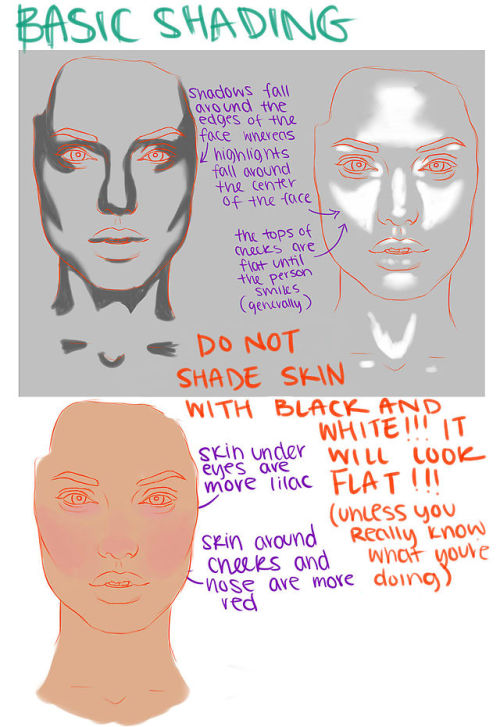


Let me know if you have questions!!!

Just random and for like cartoons not real life
-
 blackbeariejam liked this · 2 weeks ago
blackbeariejam liked this · 2 weeks ago -
 sanguineshade reblogged this · 2 weeks ago
sanguineshade reblogged this · 2 weeks ago -
 mecharockerz liked this · 3 weeks ago
mecharockerz liked this · 3 weeks ago -
 varaficus liked this · 3 weeks ago
varaficus liked this · 3 weeks ago -
 artaytheclown liked this · 1 month ago
artaytheclown liked this · 1 month ago -
 yawningcat07 liked this · 1 month ago
yawningcat07 liked this · 1 month ago -
 sanguineshade liked this · 1 month ago
sanguineshade liked this · 1 month ago -
 oldlunarrepublic liked this · 1 month ago
oldlunarrepublic liked this · 1 month ago -
 esfag liked this · 1 month ago
esfag liked this · 1 month ago -
 somekindofgremiln liked this · 1 month ago
somekindofgremiln liked this · 1 month ago -
 witchlightdesigns reblogged this · 1 month ago
witchlightdesigns reblogged this · 1 month ago -
 witchlightdesigns liked this · 1 month ago
witchlightdesigns liked this · 1 month ago -
 archiedragons liked this · 1 month ago
archiedragons liked this · 1 month ago -
 wolverineblues liked this · 1 month ago
wolverineblues liked this · 1 month ago -
 hobgobbin reblogged this · 1 month ago
hobgobbin reblogged this · 1 month ago -
 hobgobbin liked this · 1 month ago
hobgobbin liked this · 1 month ago -
 maddestmax reblogged this · 1 month ago
maddestmax reblogged this · 1 month ago -
 maddestmax liked this · 1 month ago
maddestmax liked this · 1 month ago -
 cohobbitation reblogged this · 1 month ago
cohobbitation reblogged this · 1 month ago -
 heartfullofleeches liked this · 1 month ago
heartfullofleeches liked this · 1 month ago -
 mfreedomstuff reblogged this · 1 month ago
mfreedomstuff reblogged this · 1 month ago -
 mfreedomstuff liked this · 1 month ago
mfreedomstuff liked this · 1 month ago -
 an-albino-pinetree liked this · 1 month ago
an-albino-pinetree liked this · 1 month ago -
 kaygirl6567 reblogged this · 1 month ago
kaygirl6567 reblogged this · 1 month ago -
 st3llarst4rz liked this · 1 month ago
st3llarst4rz liked this · 1 month ago -
 xeviersnow liked this · 1 month ago
xeviersnow liked this · 1 month ago -
 thatguywhodoesstuff liked this · 1 month ago
thatguywhodoesstuff liked this · 1 month ago -
 kitten-kokomo reblogged this · 1 month ago
kitten-kokomo reblogged this · 1 month ago -
 kitten-kokomo liked this · 1 month ago
kitten-kokomo liked this · 1 month ago -
 odd-draws-stuff liked this · 1 month ago
odd-draws-stuff liked this · 1 month ago -
 ohyesgetsnuck-opon liked this · 1 month ago
ohyesgetsnuck-opon liked this · 1 month ago -
 the-snowlion liked this · 1 month ago
the-snowlion liked this · 1 month ago -
 annabelle0009 liked this · 1 month ago
annabelle0009 liked this · 1 month ago -
 pavettadraws liked this · 1 month ago
pavettadraws liked this · 1 month ago -
 chela001 liked this · 1 month ago
chela001 liked this · 1 month ago -
 natsu-meow reblogged this · 1 month ago
natsu-meow reblogged this · 1 month ago -
 natsu-meow liked this · 1 month ago
natsu-meow liked this · 1 month ago -
 weirdcoregal35 reblogged this · 1 month ago
weirdcoregal35 reblogged this · 1 month ago -
 weirdcoregal35 liked this · 1 month ago
weirdcoregal35 liked this · 1 month ago -
 that-one-unknown-artist reblogged this · 1 month ago
that-one-unknown-artist reblogged this · 1 month ago -
 that-one-unknown-artist liked this · 1 month ago
that-one-unknown-artist liked this · 1 month ago -
 purplejes liked this · 1 month ago
purplejes liked this · 1 month ago -
 the-cosmic-cowbo-y liked this · 1 month ago
the-cosmic-cowbo-y liked this · 1 month ago -
 nomname liked this · 1 month ago
nomname liked this · 1 month ago -
 leefl00f liked this · 1 month ago
leefl00f liked this · 1 month ago -
 yukitsen reblogged this · 1 month ago
yukitsen reblogged this · 1 month ago

Sylwester | i will mostly post sketches, because i'm too lazy to end them
196 posts